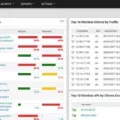Fog computing is a distributed computing infrastructure that extends the cloud closer to the edge devices. It provides the advantages and power of cloud computing while keeping data processing close to where it is created. With fog computing, raw data can be captured by the internet of things (IoT) beacons, sent to fog nodes located close to the data source, analyzed locally and then sent to the cloud for long-term storage if needed.
The main difference between fog and cloud computing is that while cloud computing is a centralized scalable storage placed away from the edge, fog computing is a network layer that brings cloud services closer to edge devices. This allows for faster data processing and improved performance. Fog nodes are key elements in fog networks as they provide a platform for local computation and caching, helping reduce bandwidth consumption and latency.
Fog networks work well with applications where real-time decisions need to be made quickly. For example, an embedded application on a production line may use a temperature sensor connected to an edge server that measures temperatures every second. This data can be sent directly from the sensor to an edge server for processing, instead of sending all this data over the network to the cloud for analysis. This reduces latency time between data capture and decision-making significantly compared with cloud-only solutions.
Fog computing offers many advantages such as improved scalability, flexibility, and cost savings over traditional cloud-only architectures. In addition, it also helps organizations achieve their digital transformation initiatives by providing real-time insights into their operations without having to invest heavily in expensive infrastructure or wait for long periods of time before they can get meaningful results from their big data projects.
Overall, fog computing is an important tool in today’s digital world that helps businesses process large amounts of data quickly while reducing costs associated with traditional infrastructure requirements. By bringing computing resources closer to end users and leveraging existing networks more efficiently, organizations can gain valuable insights more quickly at lower costs than ever before.

Understanding the Basics of Fog Computing
Fog computing is a distributed computing approach that uses edge devices and fog nodes to extend cloud computing capabilities to the edge of a network. It works by having IoT beacons capture raw data, which is then sent to a fog node close to the data source. The fog node processes the data, such as filtering and analyzing it, before sending it to the cloud for long-term storage if necessary. This allows for faster processing of data and real-time analytics at the edge of the network, instead of relying on remote cloud resources for computation. Additionally, fog nodes can also act as a gateway between different networks or systems, allowing them to communicate with one another more efficiently.
Comparing Fog and Cloud Computing
Fog computing is a distributed computing architecture that extends cloud infrastructure to the edge of the network. It is designed to process and store data closer to the source of communication, improving latency and scalability. By providing services within close proximity to the source of communication, fog computing helps optimize data transfer speeds, reduce network traffic, and improve overall system performance.
Cloud computing is a type of internet-based computing wherein shared resources, software, and information are provided to computers and other devices on demand. This type of computing allows users to access applications from anywhere in the world via an internet connection. Cloud computing enables users to access applications without having to install them on each individual computer or device. Cloud services are typically managed through a web-based portal or application programming interface (API). Additionally, cloud services can be scaled up or down depending on user demand, allowing for more cost-efficient usage than traditional hosting solutions.
Real-Life Examples of Fog Computing
A real-life example of fog computing can be seen in the autonomous vehicle industry. Autonomous vehicles use a combination of sensors, cameras, and other technologies to navigate their environment. This data is processed on board the vehicle, but the system is designed to send some of this data to a fog computing network in order to leverage greater processing capabilities and better decision-making capabilities. For example, if an autonomous vehicle detects a potential obstacle in its path, it may send a detailed report of the object’s size, shape, and location to the fog computing network for further analysis and comparison with other objects detected by other vehicles in the area. This data can then be used to make decisions about whether or not it is safe for the vehicle to proceed.
The Benefits of Fog Computing
Fog computing is an ideal solution for applications where data must be processed quickly and efficiently, such as in the Internet of Things (IoT) and industrial automation. It is a distributed computing paradigm that brings computation, services, and storage closer to the physical things that generate data. Utilizing fog nodes (computing devices situated at the edge of the network), enables data processing locally instead of having it centralized in the cloud. This reduces latency and improves performance, as well as provides the ability to store and process data even when a connection to the cloud is not available.
Fog computing can also help facilitate better communication between devices within a given network by bringing decision-making processes closer to their source of origin. This allows for improved scalability and reliability since decisions can be made without having to rely on cloud infrastructure. Furthermore, fog computing is more secure as data remains within a local area network rather than being exposed to potential security threats from remote locations.
fog computing provides many benefits such as improved performance, scalability, security, and reliability for applications that require real-time data processing or decision-making at the edge of networks. It is especially useful for IoT and industrial automation systems where latency must be minimized in order for applications to function optimally.
Will Fog Computing Replace Cloud Computing?
No, fog computing will not replace cloud computing. Instead, it complements the cloud by bringing computing resources closer to the source of information. Fog computing is a distributed computing architecture that utilizes devices such as sensors, routers, and switches to collect and process data at or near the edge of a network. This allows applications to be processed more quickly and efficiently than if they were processed in the cloud. By making it easier for data to be stored and analyzed close to its source, fog computing can help improve performance for latency-sensitive applications such as IoT, autonomous vehicles, healthcare monitoring, and many more. Additionally, fog computing can help reduce bandwidth congestion on the cloud by offloading certain tasks from it. Thus, while fog computing may enhance certain aspects of cloud services, it will not replace them entirely.
Exploring the Potential of Fog Computing as the Future of Computing
Fog computing is undoubtedly the future of Cloud Computing. It is a distributed computing architecture that is used to bridge the gap between cloud computing and the edge of the network. By leveraging its ability to process data closer to where it originated, fog computing can help keep the storage and processing needs of the core processing center low while making processes much quicker. Additionally, it eliminates the need for costly bandwidth upgrades by offloading GBs of network traffic, making it an attractive option for businesses looking to maximize efficiency. Its scalability also makes it suitable for use in a variety of industries, from healthcare to manufacturing. Ultimately, fog computing offers improved performance and cost savings that make it a viable alternative to traditional cloud-based solutions.
The Three-Layer Architecture of Fog Computing
The three-layer architecture of fog computing consists of end devices, fog nodes, and clouds. End devices are found in large numbers and offer limited computing capabilities. Fog nodes provide a higher capacity than end devices, but are less numerous. Lastly, clouds offer the largest capacity, but are few in number. Each layer of the architecture provides different functions to enable the efficient storage, processing, and sharing of data across a distributed network. End devices typically provide local data processing and services to users on the edge of the network. Fog nodes bridge the gap between end devices and clouds by providing additional processing power and services while reducing latency. Finally, clouds provide a central repository for large datasets that can be accessed by other layers within the fog computing architecture.
Applications of Fog Computing
1. Smart Utility Service: Fog computing can be used to facilitate the development of smart utility services. These services involve the use of sensors, data analytics, and artificial intelligence (AI) to identify opportunities for energy conservation and cost savings. This is done by monitoring energy consumption patterns and providing insights on how to optimize energy usage.
2. Smart Cities: Fog computing can also be used in smart cities to help with traffic regulation. By deploying sensors at key points along roads, real-time traffic data can be collected and analyzed in order to predict traffic patterns and make adjustments accordingly. This has been shown to reduce city congestion and improve the overall quality of life for citizens.
3. Healthcare: Fog computing can be utilized in healthcare settings as well, as it provides a secure environment for the transmission of sensitive patient information between medical devices and other systems or personnel involved in patient care. With fog computing, medical devices are connected securely to cloud-based systems without compromising patient privacy or security. Additionally, fog computing can provide faster access to medical records due to its distributed nature and low-latency connections between devices within a fog network.
Companies Utilizing Fog Computing
Fog computing is a distributed computing architecture that facilitates the development of applications and services at the edge of the network, closer to the end user. It enables the local collection, aggregation, analysis, and action of data generated by connected devices. Companies that use fog computing include:
1. IOTech – IOTech is an open-source edge computing company specializing in IIoT technology and solutions. It offers integrated hardware and software platforms for building secure, distributed systems.
2. Crosser – Crosser is a cloud-agnostic platform used to build, deploy and manage distributed applications on edge devices. It supports both traditional and new industrial IoT protocols such as MQTT, OPC UA, and LWM2M.
3. Teraki – Teraki is a cloud-native platform used to develop AI applications for edge devices in industrial environments such as manufacturing plants or connected vehicles. It includes tools for training machine learning models on-device fleets and deploying them to edge gateways or embedded systems.
4. Cartesiam – Cartesiam provides AI technology for embedded systems such as microcontrollers and single-board computers (SBCs). Its NanoEdge AI platform enables developers to build machine-learning models directly on resource-constrained devices without external cloud servers or GPUs.
5. V5 Systems – V5 Systems provides an edge computing platform for industrial IoT applications such as asset tracking and predictive maintenance in hazardous environments. Its products include ruggedized gateways with built-in sensors, analytics engines, wireless communication modules, security features, and data storage capabilities.
6. PrismTech – PrismTech specializes in delivering software platforms tailored to the needs of enterprise customers in industries ranging from automotive to healthcare to aerospace & defense markets. Its Vortex Edge Data Platform is used to develop distributed applications on multiple device types connected over various networks with varying latency requirements.
7 Nebbiolo Technologies – Nebbiolo Technologies provides an open-source platform called EdgeScale that enables users to build IoT applications using cloud technologies such as AI/ML while still taking advantage of the low latency offered by fog computing architectures at the edge of the network.
8 Ekkono – Ekkono is an artificial intelligence company specializing in real-time decision-making at the edge of IoT networks. Their EdgeML technology uses machine learning algorithms running directly on connected devices instead of relying on external servers for processing.
9 FogHorn Systems – FogHorn Systems provides an intelligent edge computing platform designed for operational intelligence applications including predictive maintenance. Its Lightning platform integrates with existing IT infrastructure while providing local data processing capabilities.
10 Aqeedi – Aqeedi offers a range of software solutions designed to help organizations manage their fog computing deployments. The company’s products enable users to collect data from various sources, analyze it, visualize it, share insights, make decisions, automate processes, manage resources, monitor performance, integrate with other systems, etc.
Conclusion
In conclusion, fog computing is a decentralized computing infrastructure that allows data, computing, storage, and applications to be located between the data source and the cloud. It works by utilizing fog nodes and edge devices to capture raw data and send it to a fog node close to the data source. The main difference between fog and cloud computing is that while the cloud is centralized, fog extends the cloud closer to the edge for faster data processing. Fog computing can be used in many different scenarios such as embedded applications or monitoring of temperature spikes. By utilizing fog computing, businesses can benefit from faster data processing, improved scalability, cost savings, and more efficient use of resources.







